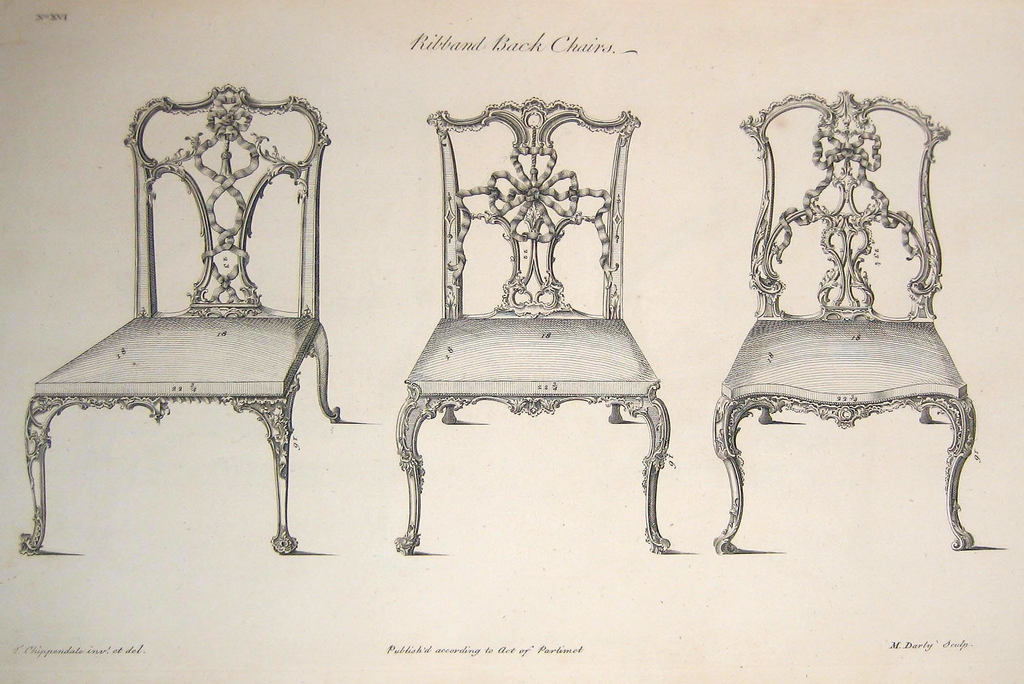Even today, in the twenty-first century, when we think of ribbons and bows we tend to think of girls, not boys. This design from 1755, has both ribbons and bows, but was designed by an Englishman: Thomas Chippendale. What is more, it was published in a book meant exclusively for men: The Gentleman and Cabinet-Maker’s Director. Chippendale’s publication was a pattern book with multiple designs for domestic objects such as chairs, beds, tall clocks, frames, and high boys – all presented in a variety of styles including English Rococo, Neoclassical, and Chinoiserie. Pattern books, like Chippendale’s, helped to disseminate these particular styles, including Rococo, throughout Europe and early America. Objects in the English Rococo style, such as the chairs in this design, are nearly always whimsical, if not actually frivolous, with a buoyant asymmetry that imbues them with a lively energy. But the real trademark of rococo design is the penchant for employing S- and C-curves, which this particular design by Chippendale displays successfully. The chair splats are not only constructed of ribbons and bows, but also languid, small and large C-curves. The chair legs too present this curvaceous penchant and, ultimately, undermine any hint of masculinity in the designs.
Rococo was, even in its own time, critiqued for its fragile and feminine appearance. The Neoclassicists who favored rigidity, rationality, and Classical right angles, were generally offended by the Rococo and its seeming playfulness. Nonetheless, plenty of affluent members of English and American society used Chippendale’s Rococo designs to their fullest potential. We know that the Director was meant to serve as a didactic tool, because often the designs for furniture are split down the middle, one half in one style, the other half in another. Those who referenced the manual were meant to be inspired and could choose the elements they wished to see on their furniture. With the Director in hand, gentlemen could now “design” furniture and objects, for a variety of rooms in their house, in whichever style they preferred. No longer was the design choice left purely to the cabinet-maker, or only exercised through the process of purchasing objects. Now, the choice was in the commission.
